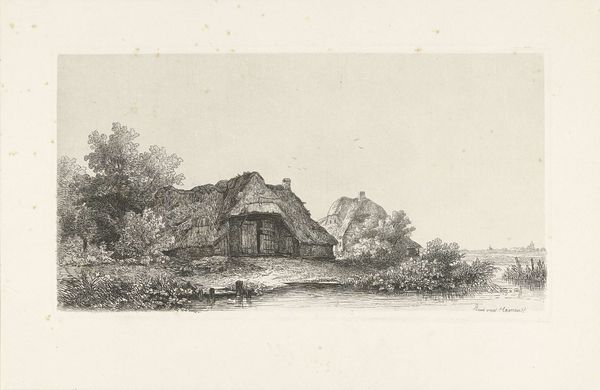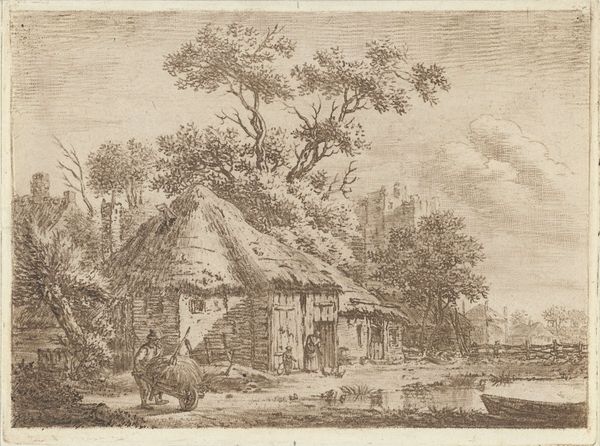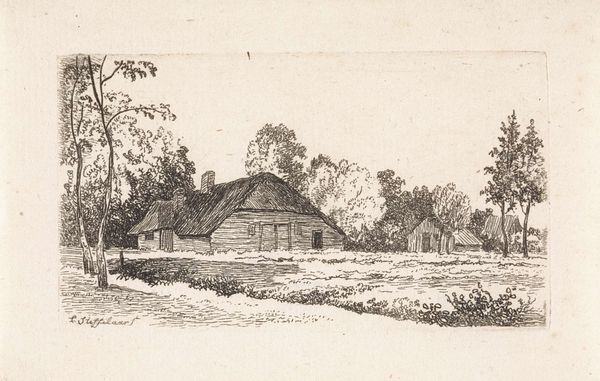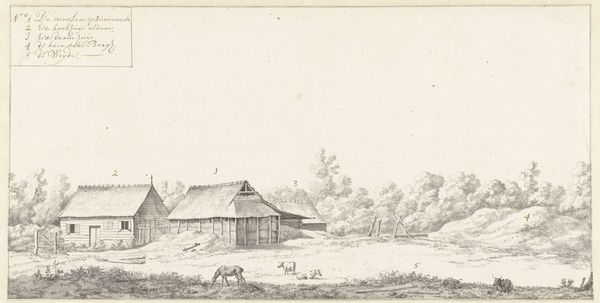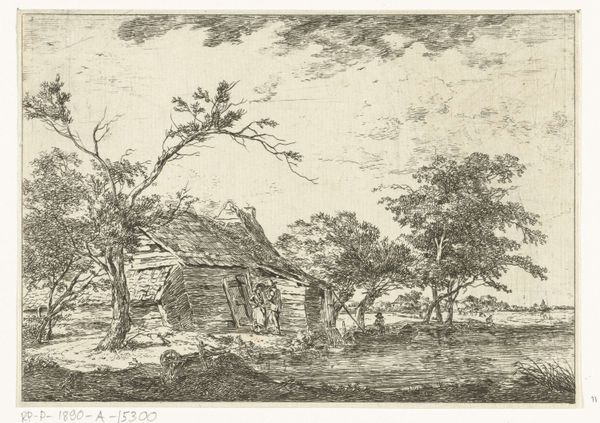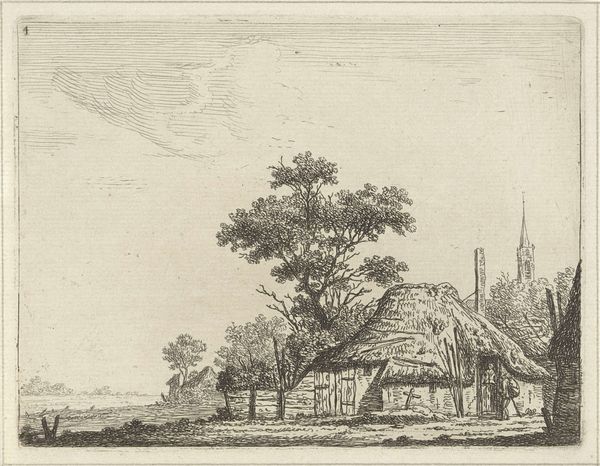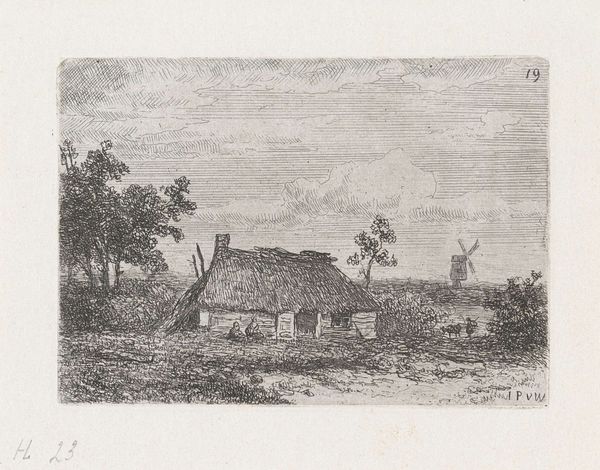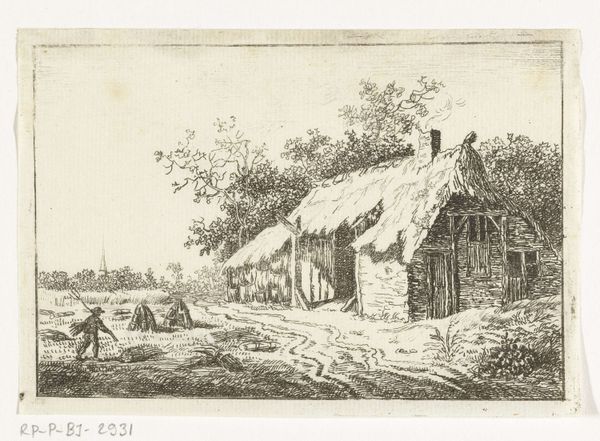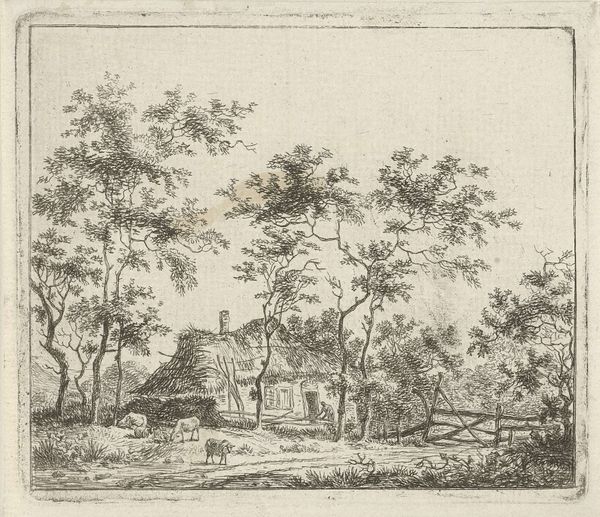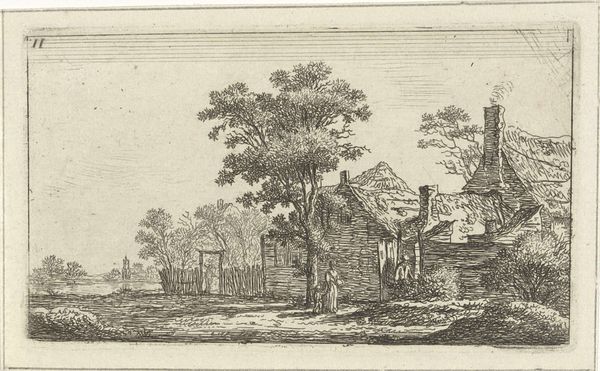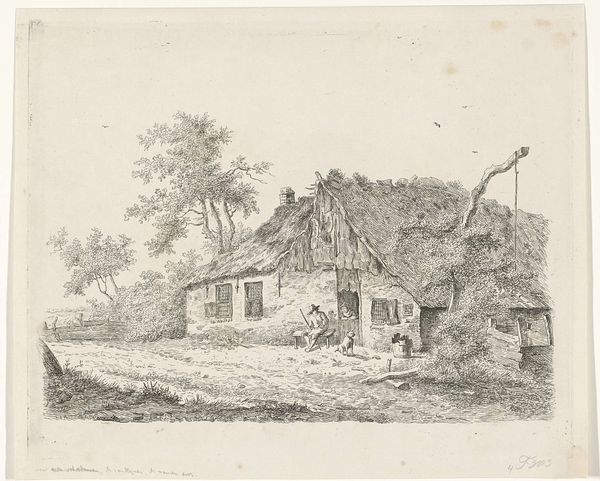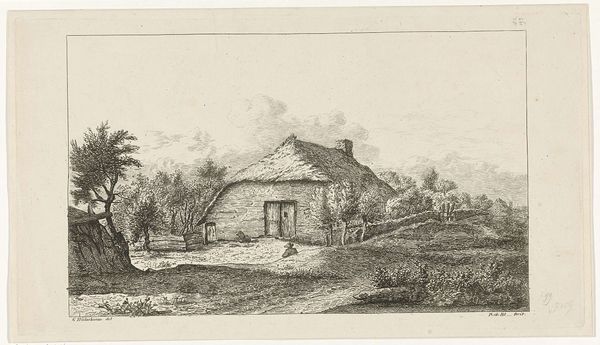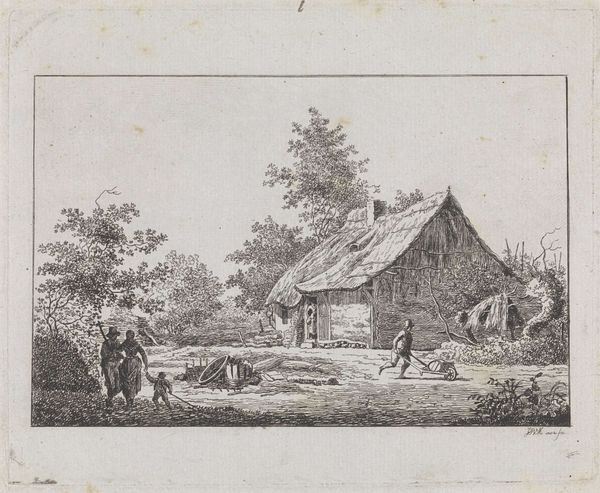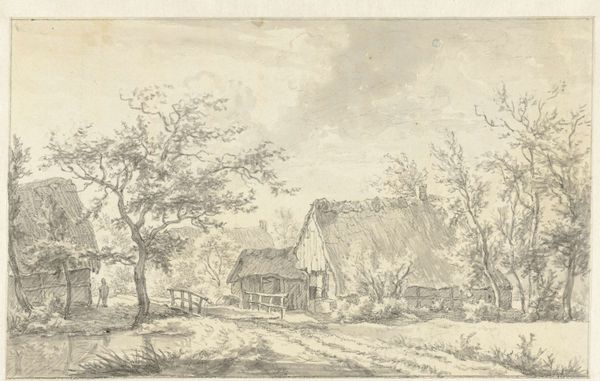
print, etching
#
dutch-golden-age
# print
#
etching
#
landscape
#
realism
Dimensions: height 167 mm, width 313 mm
Copyright: Rijks Museum: Open Domain
Editor: This is "Boerderijen aan het water", or "Farms on the Water," by Remigius Adrianus Haanen, an etching likely created between 1827 and 1894. It's a quiet scene; you can almost feel the stillness of the water. I'm interested in understanding how its composition might reflect the culture and processes of that time. What's your perspective on this work? Curator: Well, let’s consider the means of production here. It's an etching, which is a printmaking technique, allowing for the reproduction and dissemination of images. This brings up questions about accessibility, the art market, and who consumed images of rural life in the 19th century. Editor: So, it's not just about depicting a pretty landscape; it’s also about making art accessible through reproducible materials. But, how does that challenge traditional views of art? Curator: By moving away from unique, handcrafted objects. An etching emphasizes process, the labour involved in its creation. Notice the delicate lines created by the etching needle; these aren't spontaneous marks, but controlled gestures that reflect a certain craft. This democratizes images, moving away from an elitist vision of art only accessible to wealthy patrons commissioning single pieces. Editor: That makes sense. I hadn't considered the work involved in creating something reproducible as a comment on labour and value. But I am curious, what about the landscape itself? Does that speak to a social context? Curator: Definitely. Landscape paintings and prints often idealize rural life. We can question what this depiction of farmhouses tells us about ideas of nature and rural work in Dutch society during that time. Is it romanticized, or does it show us something about labour and class? Also, notice how the houses are literally ‘on the water’; the infrastructure that defines the farming here is visible in the final material artwork. Editor: That's a great way to consider the image. I was stuck on the calm feeling, but thinking about the printmaking process and the portrayal of rural labor gives me a whole new level of understanding. Curator: Exactly, seeing art through the lens of material and social processes allows for much deeper engagement. I'll keep this artwork in mind.
Comments
No comments
Be the first to comment and join the conversation on the ultimate creative platform.
